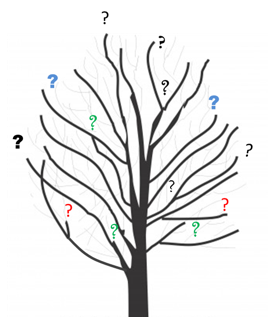Dr. David Hillson
 “The future is another country; they do things differently there”, to adapt the opening words of L P Hartley’s novel 'The Go Between'. A large part of the risk management process involves looking into the future and trying to understand what might happen and whether it matters. One important quantitative risk technique which might help is decision tree analysis. This has been neglected in recent years but is enjoying something of a revival. Some people feel it should be reserved for strategic decisions, and others regard the technique as complex and difficult. But at heart it is really quite simple, and can be applied to many different uncertain situations..
“The future is another country; they do things differently there”, to adapt the opening words of L P Hartley’s novel 'The Go Between'. A large part of the risk management process involves looking into the future and trying to understand what might happen and whether it matters. One important quantitative risk technique which might help is decision tree analysis. This has been neglected in recent years but is enjoying something of a revival. Some people feel it should be reserved for strategic decisions, and others regard the technique as complex and difficult. But at heart it is really quite simple, and can be applied to many different uncertain situations..
The decision tree approach recognises that there are two major factors which affect the future – choice and chance. And in evaluating these we need to consider two parameters – costs and consequences.
These four elements form the basis of decision tree analysis.
-
The first step in building a decision tree is to identify the choices we must make in trying to achieve our objectives. These choices form the branches of the tree. For example “make or buy”, “in-house or out-sourced”, “fast-track or traditional”, “innovative or proven approach”, “supplier A or B”, “low or high priority”. Each of these decisions leads to different outcomes, which are reflected in the decision tree using the other three elements.
-
The simplest factor associated with alternative choices is cost, including both implementation cost and opportunity cost. In some cases this may be negative, reflecting a saving. But it is important to accept that making a choice is rarely a zero-cost action, and an estimate of this must be included against each branch of the decision tree.
-
Chance is also an important variable associated with different decision options. Each alternative could have a range of possible outcomes, though some choices could lead only to one certain result. For example different technology options may have different chances of success, or alternative contractors may be more or less reliable. Where there is uncertainty over the result of a decision, this must be identified and assessed, including the estimated probability of each outcome. And some chance events might also open up the possibility of new choices, producing a series of nested branches within the tree.
-
Finally the decision tree must address consequences. If a particular decision option were to be taken, incurring both cost and risk, the final result must be estimated, which is usually the payoff for implementing that decision. This is typically expressed in financial terms, though other measures can be used. The decision tree structure describes the predicted outcome of each choice/chance combination, representing the leaves at the end of each branch.
Having built the decision tree from these four components, it can then be analysed to determine the most favourable choice, taking into account the related costs, chances and consequences. First each possible forward path through the tree is followed and its value is calculated by accumulating the costs and payoffs from beginning to end. Then using these path values and working backwards from the end of each branch, the “expected value” of each choice is calculated, taking probability-weighted consequences when chances occur. The branch with the highest expected value becomes the recommended decision option.
There are several challenges in using decision trees effectively, including the practical limitation of the technique to analysing a small number of decision options with a limited range of possible risks. The typical project involves many decisions at different levels, each with a wide range of associated risks, and trying to reflect this in a single decision tree could result in a massive and unusable model. The technique also require all factors to be represented quantitatively – cost and consequences are usually expressed in financial terms, and probability must be estimated for all chances. And decision tree analysis also assumes a “risk-neutral decision maker” whose choices are based on highest expected value – which is rarely the case.
Despite these limitations, decision tree analysis presents a powerful quantitative technique for assessing possible futures, taking into account the effects of both choice and chance and estimating both costs and consequences.
- © David Hillson
- www.risk-doctor.com





